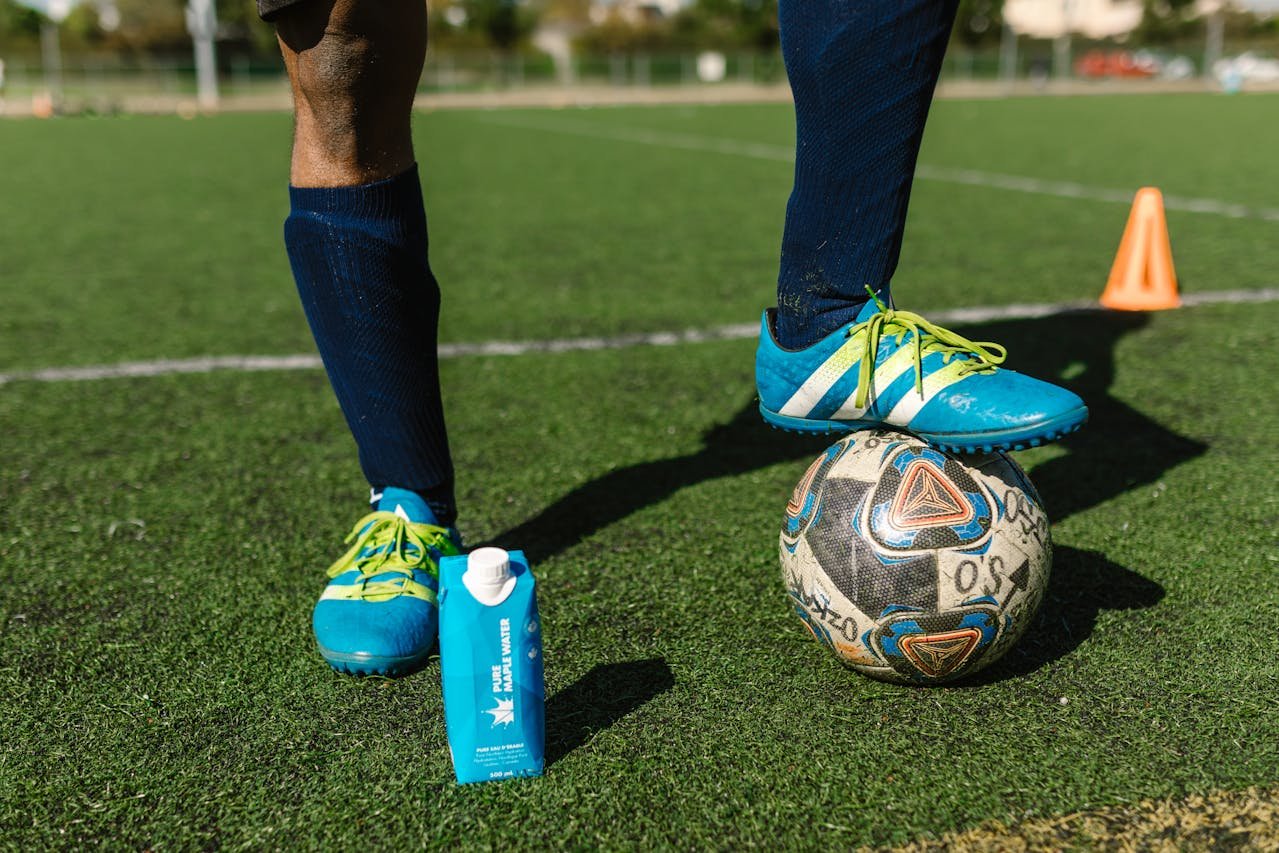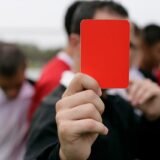When it comes to soccer, your choice of cleats can have a significant impact on your performance on the field. One of the key factors in choosing the right pair of cleats is the type of surface you’ll be playing on. In this article, we’ll compare artificial grass cleats to natural grass cleats to help you decide which one should be your go-to option.
Playing on different surfaces requires a different type of traction and support. Artificial turf and natural grass are quite different, and wearing the wrong cleats can lead to discomfort, lack of traction, or even injury. With so many options available, finding the right pair can be overwhelming. However, once you understand the differences between artificial and natural grass cleats, you’ll be better equipped to make an informed decision.
What Are Artificial Grass Cleats?
Artificial grass cleats, often referred to as AG cleats, are designed specifically for artificial turf surfaces. These surfaces are made of synthetic materials, which are quite different from natural grass. Artificial grass cleats are built to provide optimal traction on these synthetic surfaces without causing damage to the turf.
The studs on AG cleats are generally shorter and more numerous than those found on natural grass cleats. This helps distribute pressure evenly across the surface and prevents the cleats from getting stuck in the turf. The shoes often have a flat or semi-flat soleplate, making them ideal for the consistent but slightly slippery nature of artificial grass.
Why Choose Artificial Grass Cleats?
Artificial grass cleats are great for anyone who regularly plays on synthetic surfaces. Here are some key benefits:
- Better traction: The shorter studs on AG cleats ensure you don’t get stuck in artificial turf while providing plenty of grip for quick movements.
- Protection for the turf: Unlike longer studs, AG cleats help minimize wear and tear on artificial turf, extending its lifespan.
- Comfort: These cleats are designed to reduce pressure on your feet, making them ideal for long games on artificial surfaces.
Helpful Hint:
If you’re playing mostly on artificial turf, it’s worth investing in a good pair of AG cleats to avoid unnecessary strain on your joints and improve your grip on the field.
What Are Natural Grass Cleats?
Natural grass cleats are designed for play on real grass surfaces. The studs on these cleats are generally longer and spaced farther apart to provide better traction on softer, more uneven ground. The longer studs dig into the grass, giving players the stability and grip they need to make sharp turns and quick cuts.
These cleats are typically more aggressive in their design, with studs that can be conical or bladed, helping to increase grip and reduce slipping on wet or slippery natural grass fields.
Why Choose Natural Grass Cleats?
Natural grass cleats are perfect for players who spend most of their time playing on real grass fields. Here are some reasons to choose them:
- Enhanced grip: Longer studs provide maximum traction, making them perfect for slippery or muddy conditions.
- Stability: The design of natural grass cleats helps stabilize your footing during quick movements, especially on uneven surfaces.
- Comfort for natural surfaces: The studs’ design ensures you don’t feel every bump or divot in the ground, making it easier to move naturally.
Helpful Hint:
If you play primarily on grass fields, it’s best to opt for cleats specifically designed for natural surfaces to give you the best possible grip and control.
Artificial Grass vs. Natural Grass Cleats: Key Differences
Now that we’ve covered the basics of each type of cleat, let’s dive into the key differences between artificial grass and natural grass cleats. Understanding these differences will help you choose the right pair based on your playing environment.
Stud Design and Length
The most obvious difference between AG and FG cleats is the stud design. AG cleats feature shorter, more numerous studs, providing a flatter surface and evenly distributing pressure on the synthetic turf. This design helps prevent the cleats from getting stuck in the turf.
In contrast, FG cleats have longer studs that dig into natural grass. These longer studs are crucial for traction on soft, uneven surfaces. The blade-like or conical shape of the studs also helps with stability and grip, especially in muddy conditions.
Traction and Performance
AG cleats are built for optimal performance on synthetic turf. The focus here is on grip without damaging the surface. Since artificial turf is more predictable than natural grass, AG cleats offer solid traction for quick movements, but they aren’t as aggressive as FG cleats.
Natural grass cleats, however, are designed to give maximum grip in challenging conditions like mud or wet grass. The longer studs allow you to dig deeper into the ground for better stability when turning or accelerating. If you’re playing on a well-maintained grass field, these cleats will provide you with superior traction and performance.
Can You Use Artificial Grass Cleats on Natural Grass?
It’s tempting to think that you can get away with wearing AG cleats on a grass field, especially if the field isn’t too wet or muddy. However, it’s not ideal. AG cleats are designed to be used on artificial surfaces, and while they may work on natural grass, you’ll likely notice a lack of grip compared to FG cleats.
The shorter studs on AG cleats may not provide enough traction for quick starts or sharp turns on grass. Additionally, using AG cleats on grass may wear down the studs more quickly since they aren’t designed to dig into the ground like FG cleats.
Which Cleats Should You Choose Based on Your Playing Environment?
Choosing between artificial grass and natural grass cleats ultimately depends on where you play most often. Let’s break down the best options based on different playing environments:
- Artificial Turf: If you’re playing on synthetic fields more than 75% of the time, go for AG cleats. They’re designed to offer superior comfort and traction on artificial turf without damaging the surface.
- Natural Grass: If you play mostly on grass fields, especially during wet conditions, FG cleats are your best bet. They offer the traction and stability you need for natural surfaces.
- Mixed Surfaces: If you play on both artificial and natural surfaces, look for cleats designed for both types of fields (usually labeled as “AG/FG”). These cleats feature a hybrid design with versatile studs to handle a variety of surfaces.
Helpful Hint:
If you frequently play on mixed surfaces, consider investing in a versatile pair of hybrid cleats that will give you decent performance on both artificial and natural turf.
Conclusion
When deciding between artificial grass and natural grass cleats, it’s important to consider where you play most often. AG cleats are perfect for synthetic fields, offering the right balance of comfort and grip. FG cleats, on the other hand, are ideal for grass fields, providing superior traction and stability. If you play on both types of surfaces, hybrid cleats can offer a good compromise.
Your cleats are an essential part of your gear, and choosing the right pair can make a world of difference in your comfort and performance on the field. So, take a good look at where you play most often, and invest in the cleats that will serve you best.
Which Cleats Are Best for Performance?
When it comes to performance, the type of cleats you choose can significantly impact your game. Whether you’re playing on artificial or natural grass, selecting the right cleats ensures optimal traction, stability, and comfort.
On artificial grass, you might want cleats with shorter studs or specialized configurations for synthetic surfaces. These types of cleats offer better grip without causing unnecessary wear. On the other hand, natural grass cleats tend to have longer studs, which help dig into the softer ground, giving you more traction. Choosing the right stud pattern can make all the difference in preventing slips and improving your overall stability.
Helpful Hint:
If you play on both artificial and natural grass, consider cleats with interchangeable studs. This will allow you to adjust based on the surface you play on.
Why Does Comfort Matter in Soccer Cleats?
Comfort is essential when it comes to choosing the right cleats for your game. If your shoes are uncomfortable, you’re less likely to perform at your best. This holds true regardless of whether you’re playing on artificial or natural grass.
When selecting cleats, focus on the fit and the materials used. Natural grass cleats, for instance, often offer more cushioning because they need to provide support for softer, uneven surfaces. Artificial grass cleats may feel firmer, but they are designed to offer more durability against the synthetic turf.
Ensure you consider things like arch support, heel cushioning, and the overall fit of the cleat. Brands like Nike, Adidas, and Puma offer a variety of options, each with their own comfort-enhancing features tailored for different playing conditions.
Are Cleats for Artificial Grass More Expensive?
The price of cleats for artificial and natural grass often varies based on materials, design, and brand. Generally, cleats designed for artificial grass tend to be more affordable, since the synthetic surfaces don’t require as much durability and protection as natural grass surfaces.
However, the price difference can also be attributed to the technology used in the cleats. High-end cleats often come with advanced features, like moisture-wicking linings, breathable uppers, and extra cushioning. So, if you’re looking for cleats that are durable on both artificial and natural grass, expect to pay a little more for the added versatility and comfort.
What About Durability for Artificial vs. Natural Grass Cleats?
Durability is one of the most important considerations when buying cleats. You want to make sure your shoes last, especially if you play regularly. Cleats for artificial grass are usually designed with more durable outsoles, as synthetic surfaces tend to wear down shoes quicker. While they might not offer the same grip as natural grass cleats, they are built to last longer on artificial turf.
Natural grass cleats, on the other hand, tend to be less durable when used on artificial grass because the rubber studs can wear down quickly against the harder, synthetic surface. That said, if you’re primarily playing on grass, the durability of these cleats will generally be better.
Stats:
Studies show that cleats designed specifically for artificial grass tend to last up to 30% longer than those designed for natural grass, thanks to the more durable soleplate and stud configuration. (Source: SoccerCleatReview.com)
How to Take Care of Your Cleats?
Proper care of your cleats can make a big difference in how long they last. Whether you play on artificial or natural grass, cleaning and storing your cleats properly ensures they stay in good shape.
For artificial grass cleats, be sure to brush off any turf particles after each game. Avoid leaving them in direct sunlight or a hot car, as heat can warp the material. Similarly, natural grass cleats should be cleaned to remove dirt and mud, and stored in a cool, dry place to prevent any damage to the materials.
Additionally, if your cleats have removable studs, make sure to check them regularly for wear and replace them when necessary. This will keep your cleats performing well over time.





